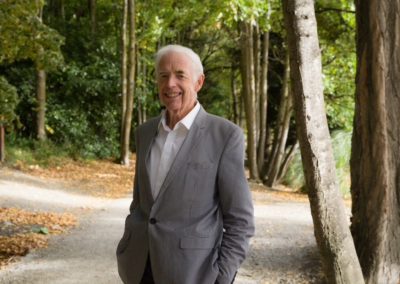Now, more than ever before, people are living well into their eighties and nineties. “When I was a girl no one knew anyone in their 90s,” visiting Professor Ngaire Kerse says, “and now I bet everyone in this room knows someone in their 90s.” Ngaire has come down from Auckland to participate in Dunedin’s Brain Awareness Week, and share what she’s learned through her extensive research into ageing. “The ageing research at this point has really focused on people up to 85, because there just weren’t enough people older than that. But now that we’re seeing baby-boomers moving toward that bracket we thought it was really important to tease out what quality of life looks like for the 85+ group.” Currently, there are around 83,000 people aged 85+ in New Zealand, by 2050 there will be more than 350,000. Knowing what they need to maintain a good quality of life will soon be an absolute necessity.
LiLACs is a cohort study of Bay of Plenty residents that began eight years ago. “The point of a cohort study is to get a snapshot of people in a particular place at a particular time,” Ngaire says, “so everyone of our non-maori participants was 85, born in 1925, and so we knew that they’d all been through roughly the same big environmental and historical events.” Ngaire and her team expanded this age range to 80-90 for Maori because they wanted to get a large enough group to be able to compare the outcomes for Maori and Non-Maori. “We have a responsibility to tangata whenua, to make sure that the information we’re producing is inclusive,” Ngaire says, “and Maori were treated very differently than non-Maori in their communities, so it was important to us to make sure that their experiences were represented.”
What Ngaire and her team found was that these aged individuals are hugely important members of their communities. Whether it be volunteering, providing guidance, or offering various forms of support (e.g. childcare), these people were still contributing members of society and should be valued as such. What’s more, the more they took part in these kinds of activities, the better their health outcomes. “It’s a bit of a chicken and egg situation,” Ngaire says, “we don’t know if it’s just that people feel better so they do more, or if doing more makes them feel better. But the idea is to not let things go, to not give up on things.”
Part of the trap people fall into with age is assuming that any drop in independence is forever. We don’t let elderly people recover in the way we allow younger groups to, we simply accept any issues as the new normal. “As we were tracking peoples function over these five years we would keep track of their independence, and yes for the most part people stick to their groups, some people become less independent, but what was really surprising and great to see is that there are always people who went from less independent to more independent.” A bad year doesn’t have to mean a life-long loss of independence, it can just be short term, and what Ngaire was able to show is that we need to be more flexible with the very elderly; we need to give them room to recover.
The last area Ngaire touched on was the importance of carers. Anyone who has cared for, or knows someone who has cared for, an elderly person understands how important and demanding that role can be. “When we spoke to the informal carers, the children, grandchildren, friends, neighbours, they didn’t always see themselves as carers, they were just helping because they loved that person and wanted to make sure they were okay.” Informal caring came with a lot of positive outcomes, but the problems arose when people were doing it alone. Financial, physical, and emotional hardship are easy to fall into when you are the sole carer of an elderly relative without proper support. “We did the math, and if the government had to actually pay people for the informal care they were providing, it would be an average of $20,000 per year for each of these study participants.” The best care, and the best outcomes for everyone, came when people were getting both informal and formal care, ensuring that they had that connection and care from someone close to them as well as the care of a professional. “What we don’t want is for someone to come in and assess the situation and say that a family doesn’t need help or extra support because they seem to be getting along just fine caring for mum or dad,” Ngaire says, “and the data really supports that everyone is better off if there is a mixture of carers and formal support in the mix.”
The very elderly are important members of our communities, and as that group continues to grow we need to understand how to best support them and care for them. We need to remember that late life doesn’t always mean deterioration, and that there are things we can all do to ensure that our older population are healthy and engaged. What Ngaire’s study really shows is that we as a society need to recognise the social value of elderly people, and their carers. They may have left the wage-earning world but these individuals are still providing for us as communities and as a nation.



